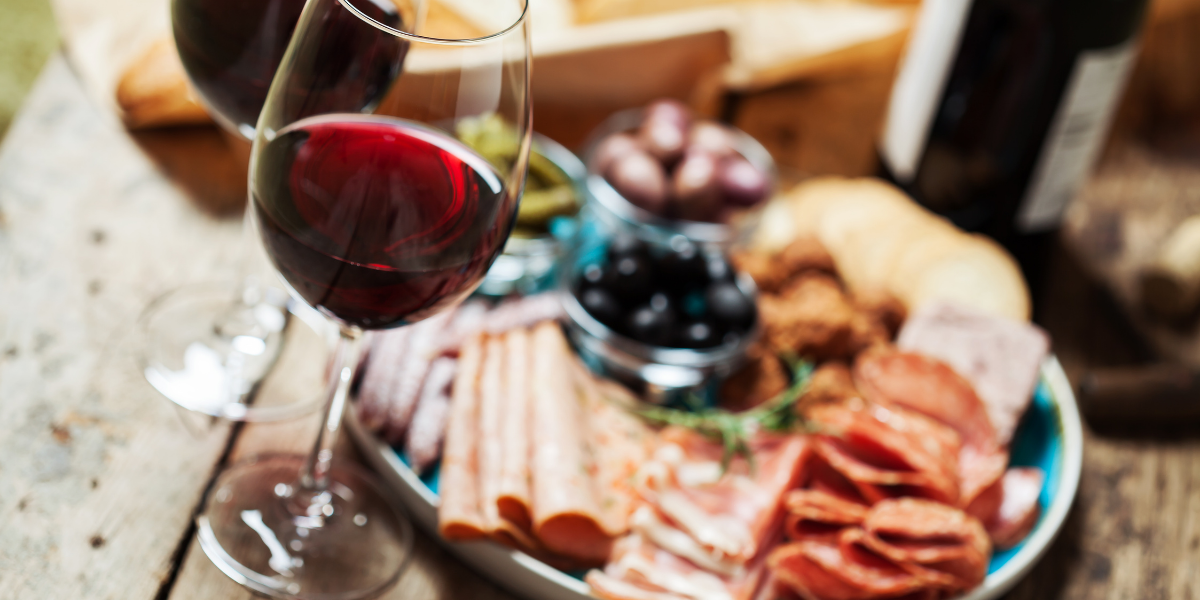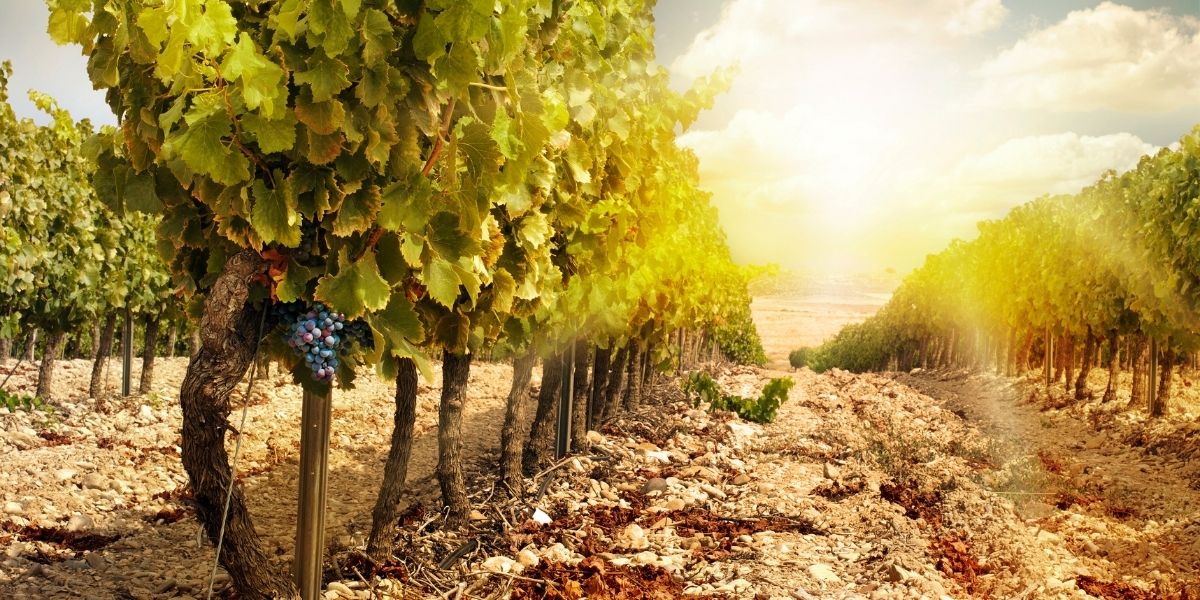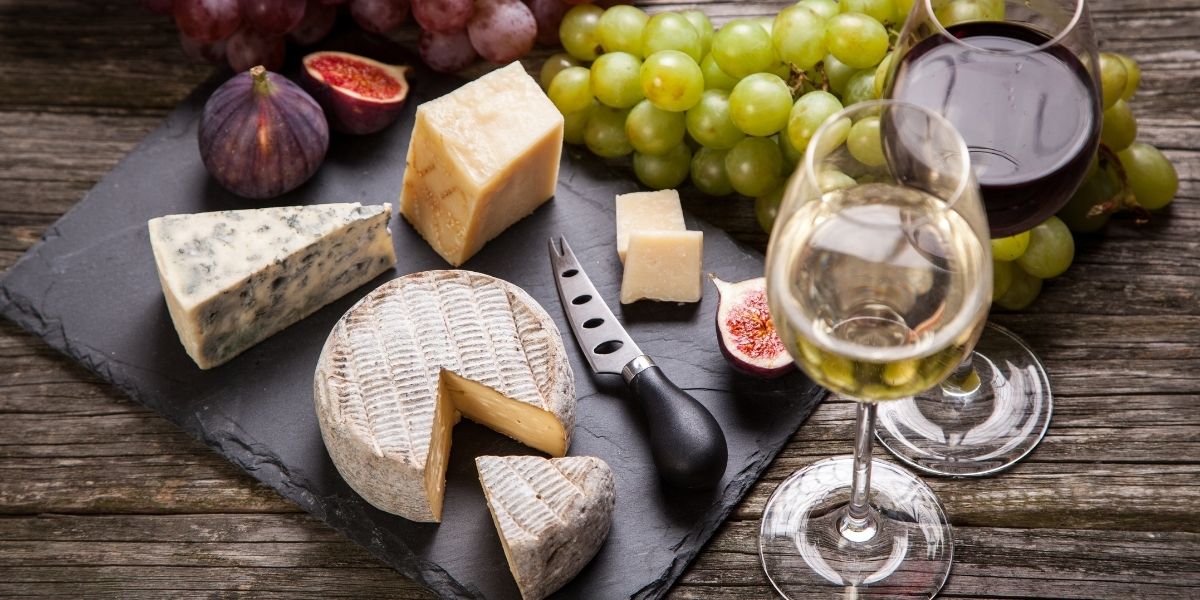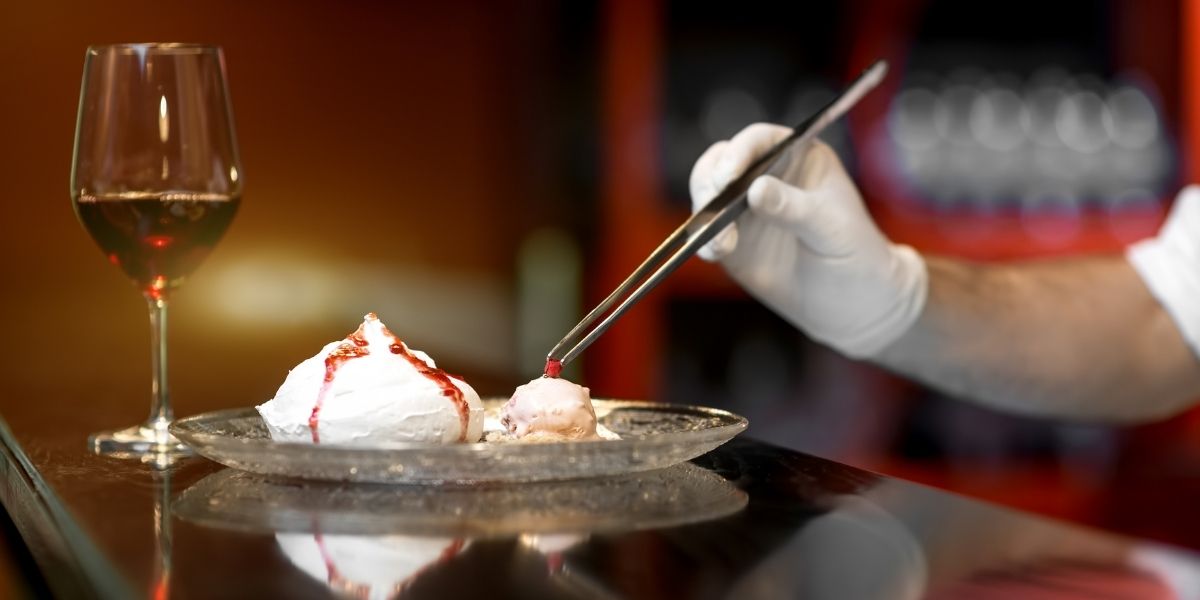Bordeaux-Style Blends and How to Pair Them
When we talk about Bordeaux-style blends it is important to know the depth of that phrase and to understand what a Bordeaux blend truly is. Bordeaux-style blends can be used to describe a variety of wines including blends made from Cabernet Sauvignon, Merlot, Cabernet Franc, Petit Verdot, and, perhaps even Carmenère and Malbec.
Colloquially, Bordeaux-style blends include those produced in the Bordeaux region and beyond. California, Washington, and Argentina are all among the world’s producers of these types of wines. However, regulations dictate that only wines made in the Bordeaux area can be actually labeled as Bordeaux.

Bordeaux-style blends are very popular, largely due to their versatility. These blends are easy enough to pair, so if you are looking for some Bordeaux blend food pairing ideas, look no further than this post.
Some of the most recommended and classic Bordeaux blend food pairing ideas are red meats. Lamb and beef dishes lend themselves particularly well to this pairing. The tannins in these wines work with the protein in red meat to enhance flavors and make for an overall delicious pairing.
Bordeaux-style blends pair well with absolutely any barbequed red meats and we also recommend dark-meat foul, venison, and bison for something a bit more unusual.
Now for the favorite part of any meal: dessert! Bordeaux blend food pairing ideas are not limited to the main course! Bordeaux-style blends lend themselves wonderfully to being paired with rich desserts, such as dark chocolate or other chocolates, particularly those that are unsweetened. Whether it’s a chocolate tort, some holiday fudge or a decadent layer cake, a Bordeaux-style blend is a great choice.
One of our absolute favorites from the Bordeaux-style blend family is Pacific Rim & Co.’s own Thick Skinned. It’s a gorgeous blend from the Red Mountain wine region in Washington State. What will you pair it with?
5 New Year's Resolutions for Wine Lovers
2020 has been quite a year. Eventful to say the least. As the New Year quickly approaches we are all looking for ways to head into 2021 with a bit of optimism and hope. Here are some great resolutions for all of you wine lovers out there.

New Year’s resolutions for wine lovers:
-
Drink local
Our first New Year’s resolution for wine lovers is to buy local. Chances are your state, county or town has a local winery or two. Supporting wineries near you is a great way to spend your money and get to know the wines produced in your area. Local wines make wonderful birthday, holiday and housewarming gifts.
2. Vote with your dollar
Like any industry there are many details about how operations are run that may or may not align with your morals and values. Voting with your dollar is a choice you can make, that, along the same lines as supporting local wineries, may just make a difference in the industry as a whole. At the very least you are supporting wineries and distributors that align with your priorities and morals.
3. Know what you like
Knowing what traits you enjoy about a wine is a great way to experience more enjoyment when you visit a wine seller or a vineyard. You needn’t know all the details and the terminology, but being able to provide a basic description of some of the qualities you enjoy in wine or some of the characteristics that are most appealing to you will help you find a more satisfying experience at a wine tasting or when purchasing a bottle.
4. Try new things
Don’t ever be afraid of trying new wines! One thing to keep in mind is when and where to do this. When you are out celebrating at a fancy and expensive restaurant you want to be sure you get maximum pleasure from your glass, or bottle, of wine. For you, this may or may not be the right time to try something new.
A tasting at a shop or at a vineyard is a great time to try something new and branch out. Even if you don’t prefer what you try, it can be really helpful information and can even give you clues about what to try next. Trying new wines is fun and informative.
5. Keep a diary
If you join a club that ships you different bottles of wine each month it can be a struggle to remember what you have tried or what you loved. When it comes to running out to pick up a bottle or two for a dinner party or to stock up for a staycation or the holidays you will want to have something to refer to.
Keeping records about what wines you have tried that include a detailed description as well as your reactions to the wine is not only useful but it can be a really fun practice that helps you increase your awareness and knowledge of wine properties and characteristics!
We wish you a happy and safe New Year!
Do Old Vines Make Better Wine?
So you find yourself in a wine bar and some bore is trying to impress you: Old vine wine is the only wine worth drinking. You could not get me to drink anything other than…” At this point, you stopped listening because you’d rather enjoy your glass of Chardonnay or Cabernet Sauvignon in peace. But… is there something to this? Is old vine wine better? In other words, do old vines produce superior quality?

What Is Old Vine Wine?
There is no strict age limit when it comes to an old vine. But we can generalize:
- 3 Years: It takes this long for a grapevine to begin to produce fruit. Winemaking is truly an investment in time, energy, and love.
- 7 - 8 Years: Now a vine is considered an “adult.”
- 12 - 25 Years: At this point, the grapevine is considered “mature.”
- 25+ Years: We’re getting old now! Some experts say that 50-year-old vines produce the best wines!
We need to dig into some wine history real quick. A tiny insect called the Phylloxera decimated Europe’s winemaking industry in the late 1800s. This aphid-like pest destroyed ancient vineyards, causing fatal root damage and microbial infections.
To attack the issue, winemakers grafted Vitis vinifera grapevines (from which their wine came) to North American species that were resistant to Phylloxera. But among the benefits, such as ability to cope with drought, grafting tends to shorten the lifespan of vines to 25 - 30 years. Hence why 25+ is considered “old” in most of the wine-producing world today.
At the ripe old age of 25 - 30 (perhaps extending to 50 or more in some areas), vines do seem to behave differently. How?
- The fruit is more concentrated. As they age, old vine wines produce less fruit. Many argue that the fruit they do produce, however, is richer and more flavorful.
- They have deep roots. This enables the vines to pull in water and nutrients from deeper into the ground. They tend to be more resistant to drought and flood, as well as more consistent in flavor.
- They are lower-maintenance. Oh, those young vines. They need so much attention! Old vines, if healthy, pretty much take care of themselves.
- Old vines may be more resistant to disease. They seem to have hardier, tougher leaves. But likely at play as well is “selection of the fittest.” If vines live to be old, they have developed resistance to black goo, Esca, fan leaf, and other scourges.
All this may be true - but it is also important to look at the quality of the vines, not just the age. For example, in the 1950s and 1960s, many vines were grown with a “quantity over quality” mentality. This does not bode well for the resulting wine! A young vine that is grown biodynamically, for example, can produce wine that is exceptional in all ways compared to an old vine that was grown with chemical-laden conventional techniques.
So age isn’t always a determinant of quality. Look deeper: what about the vineyard itself? What type of philosophy does it follow in terms of soil treatment? Pest control? Planting? Harvesting? Producing wine? Likely that old bore talking about old vine wine has no idea what it really means!
Instead of focusing solely on old vine wine, look at where and how the grapes are grown and how they go from vine to glass. This will tell you much more.
Dessert Wine and Cheese Pairings
Is there anything more satisfying (and comforting) than wine and cheese? No? Ok, now that we are all on the same page, let’s talk about some exceptional dessert wine and cheese pairings. As we always say, the best pairing is the one that you enjoy most! But if you want to explore new flavors and combinations, and find a combo that enhances the tastes, textures, and “wow” factor of each element, read on.

Classic dessert wines include Port, Sherry, and Madeira. We are also including some other sweet whites and reds. So, get out the cheeseboard and glasses, and prepare to find your new favorites.
Dessert Wines and Cheeses
|
Port: With Port, fermentation is stopped so there is more residual sugar. Strong fruit notes.
|
Try: Blue cheeses. More Nibbles: Raw or candied walnuts or pecans. |
|
Sherry: Another fortified wine, Sherry leans from slightly sweet to very sweet. |
Try: Manchego, Cabrales, Mahon, Serra de Estrella, Amontillado (if these are too hard to find, try a nice Camembert, Parmigiano Reggiano, or blue cheese). More Nibbles: Again, nuts offer a great contrast to the sweet wine and salty cheese. |
|
Madeira: More acidic than Sherry with a slightly nutty flavor. |
Try: Blue cheeses, gruyere. More Nibbles: Dark chocolate, nuts, or even better, dark chocolate-covered nuts. |
|
Moscato: Light bodied and off-dry, Moscato is becoming a household favorite. |
Try: Pepperjack, brie, muenster. More Nibbles: Cured meats (e.g. prosciutto) and nuts. |
|
Riesling: Similar to Moscato, Riesling is sweet and off-dry. Fruity and light. |
Try: Strong and/or salty cheeses like blue cheese, aged gouda, and feta. More Nibbles: Spicy foods (e.g. Thai appetizers), dried fruits, nuts. |
|
Sparkling Wines/Champagne: Bubbly and delicious! |
Try: Fatty cheeses, like brie and camembert. More Nibbles: Crudites and breadsticks with olive tapenade. |
|
Merlot: Chocolatey and smooth, Merlot is an interesting choice for a dessert wine - and we love it. |
Try: Gouda, gruyere, jarlsberg, or gorgonzola. More Nibbles: Mini meatballs. |
|
Syrah/Shiraz: Intense and full of personality. Syrah is typically lighter, while Shiraz is bold and rich. |
Try: Sharp cheddar, gouda, parmesan. More Nibbles: Black olives, smoked meat bites. |
Which dessert wines and cheeses make your must-have or must-try list?
Why Dessert Wine Pairing Is Different
Dry wines, such as Cabernet Sauvignon, Malbec, and Pinot Noir, have exploded in popularity in recent years as people seek to cut out extraneous sugar. But… sometimes, you need a little sweet wine treat. This is where dessert wine comes in! Meant to be enjoyed in small glasses and savored slowly, these options can be the perfect after-dinner indulgence. What should you know about dessert wine pairing before your next dinner party, romantic dinner, or “you” time?

Dessert Wine Pairing: Why It's Different
Dessert wine pairing is different because the wine itself is very different. It is meant to be enjoyed in small servings, and as we’ll discuss, it is sweeter than other wines due to the variations in the fermentation process. Because it is a “dessert” wine, it is understandable that you want to serve dessert with it! Sweet on sweet can be tricky, so it is important to balance flavors.
Types of Dessert Wine
First, what is a “sweet wine” or “dessert wine”? Well, if winemakers are creating dessert wine, they stop the fermentation process before the yeast transforms all the sugars into alcohol. They can do this by super-cooling the wine or by adding the appropriate amount of brandy. What you end up with is a rich, sweet wine replete with wonderful, natural sugars.
When people think of dessert wine, they typically think of port and sherry. Correct! These are two types of dessert wine - but there are more to explore:
- Sparkling (e.g. Moscato, some Riesling, Rose, some Gewurztraminer)
- Lightly Sweet (some Gewurztraminer, some Riesling, Chenin Blanc)
- Richly Sweet (e.g. some Riesling, some Gewurztraminer, Sauternais, Ice Wine)
- Sweet Red (e.g. Zinfandel, Mourvedre, Malbec, Petite Sirah, and some Bordeaux-style red blends)
- Fortified (e.g. Port, Sherry)
Now, any of these types of dessert wines can make a great dessert in and of itself, particularly if it’s a good, rich port or sherry. But what if you want to serve up a little something extra?
Your Dessert Wine Pairing Guide
The key to great dessert wine pairing is to ensure that the wines you serve compliment the dishes without overpowering them. For example, a hearty, rich Merlot with a delicate tart is not optimal because the substantive wine takes over. You won’t appreciate the elegant, airy dessert, and the wine, too, can suffer because it may seem like just too much.
Here are some of our suggestions:
- Very Sweet Desserts: If you’re enjoying a pecan pie, cheesecake, creme brulee, chocolate cake, or other decadent dessert, try a wine that will stand up to these sweet treats. You’ll need an aged madeira or port to hit all the right notes.
- Sweet Desserts: Those chocolate chip or sugar cookies are calling to you. Chocolate chip and Cabernet Sauvignon and sugar cookies and Chardonnay are matches made in dessert heaven!
- Sweet/Savory: What pairs perfectly with pumpkin pie? To compliment the savory hints, try a lightly sweet wine like Riesling.
- Sweet/Spicy: You’ve baked up a batch of gingerbread cookies, and the scent of cinnamon is making your mouth water. Choose a sweeter wine with some hint of spice to maximize impact! Riesling is a great choice here. For desserts with molasses, try a nice Pinot Noir.
- Fresh Fruit/Fruit Pies: If your dessert features stone fruits (e.g. peach, nectarines, apricots), try slightly sweet whites; if you’re going with dark fruits (e.g. cherries, plums, blackberries), go with a sweet red.
We have found that the best way to discover your favorite dessert wine pairing is to experiment! What’s your favorite combination? Does Sherry or Port overpower your delicate torts? Why not try a Chardonnay? Does Riesling get lost in creme brulee? You may need to up the sweetness factor. In any case, it comes down to your palette.
Our advice: plan your own dessert wine pairing taste test, and see what you and your friends/family discover!